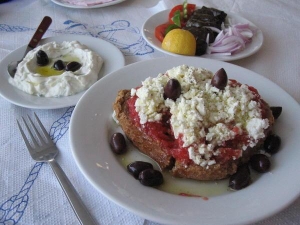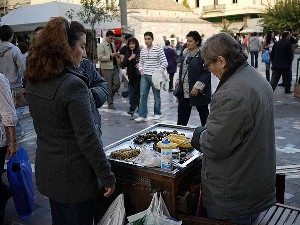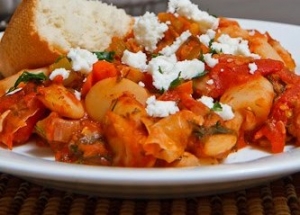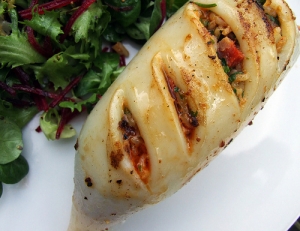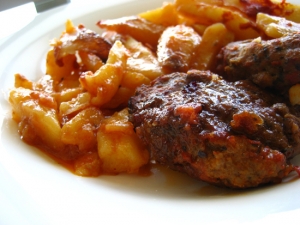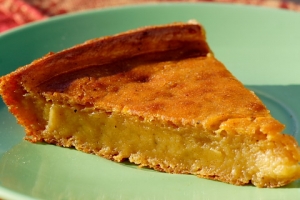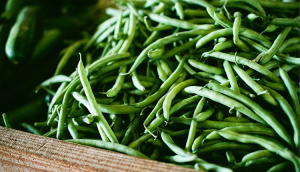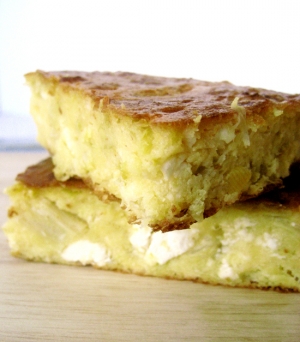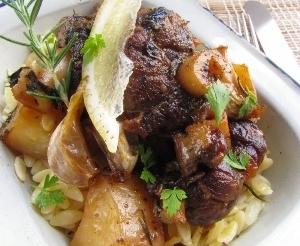Ingredients:
1.5 kg Free Range Lamb Knuckles
100 ml extra virgin olive oil
10 mls Butter
8 Shallots or small onions – peeled and left whole
6-8 Fat cloves garlic – left unpeeled
1 Clove Garlic – peeled and finely grated or crushed
2 Tbs Fresh Rosemary – removed from stalks and chopped
1 Tbs Fresh Lemon Thyme – picked from stalks
4 Sprigs Fresh Oreganum - left on the stalks
1 Fresh Bay leaf – use dried herbs if you don’t have access to fresh but remember to use much less of the dried
1 Lemon – juice and finely grated zest
8-10 Baby Potatoes – washed I used regular potatoes as that was all I had in the house. Just cut them into quarters or smaller depending on size
250ml Boiling Water
10mls NoMU Lamb Fonds - stirred into the boiling water. I love this product but if you don’t have access to it use your stock of choice
10ml Runny Honey
Salt and freshly ground pepper to taste
You will need:
A deep large casserole dish or oven proof saucepan with a good fitting lid
Aluminum Foil
Method
1. Preheat the oven to 150 degrees Celsius
2. Heat half of the oil and all the butter in a large, heavy frying pan over a medium heat
3. Add the lamb a few pieces at a time and brown on all sides. Remove from pan and drain on paper towel
4. Line your casserole dish with a large sheet of aluminum foil so that it overlaps on all sides
5. Place your browned meat into the casserole, sprinkling over a good grinding of salt and pepper
6. Add the potatoes and onions to the dish and tuck in the whole garlic cloves
7. Sprinkle over the zest, crushed garlic, herbs, lemon juice and drizzle over the honey
8. Tuck in the herb sprigs, pour over the hot stock
9. Bring the sides of the foil up around the contents to make a an airtight parcel
10. Place another sheet of aluminum foil over the top so that it slightly overlaps the edges of the casserole dish
11. Place the lid on tightly then pop it into the preheated oven for 6 hours. Don’t open until the 6 hours are up
12. Remove from oven, open up the parcel and drain off the liquid into a smallish saucepan skimming off most of the fat and oil
13. Reduce rapidly over a high heat until thickened into a nice rich sauce
I served my Kleftiko simply, over a bed of just al dente Risoni pasta, some fresh Italian Parsley and a lemon wedge….HMMMMMMM!!! Sticky, moist, lemony, falling off the bone, rich and delicious! Be sure to squeeze the sweetly roasted garlic out of the skins onto your meat and ENJOY!!
browniegirl xx

